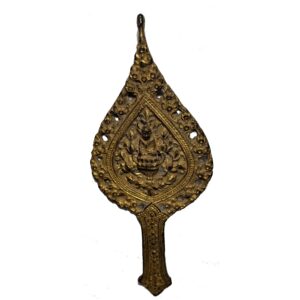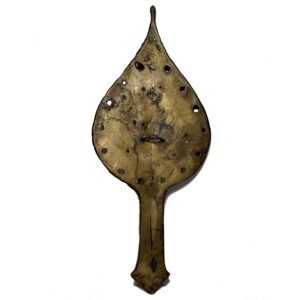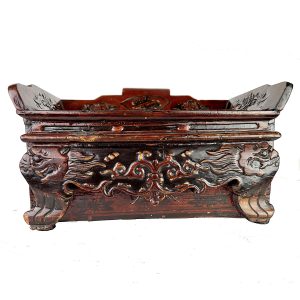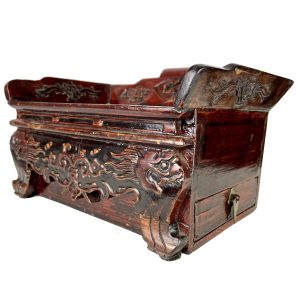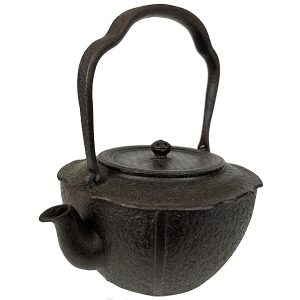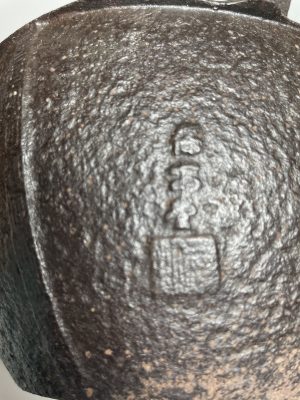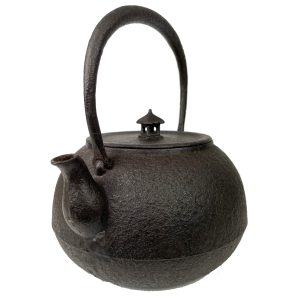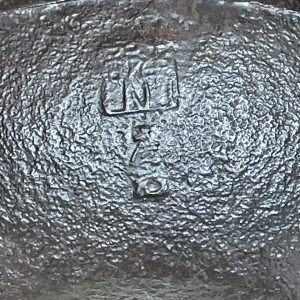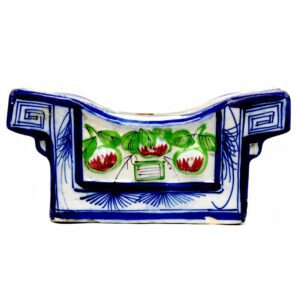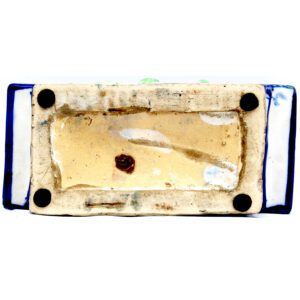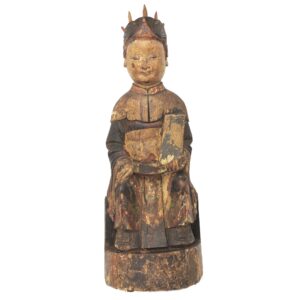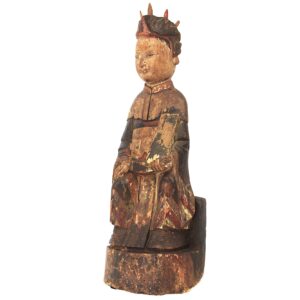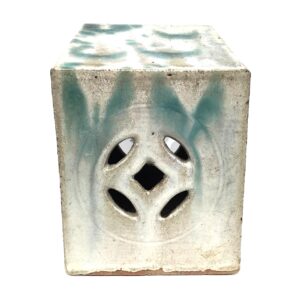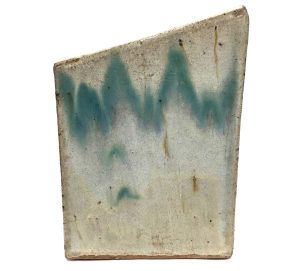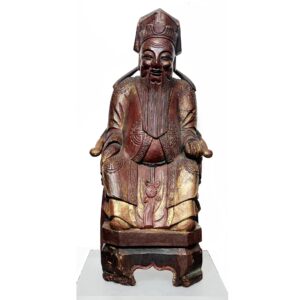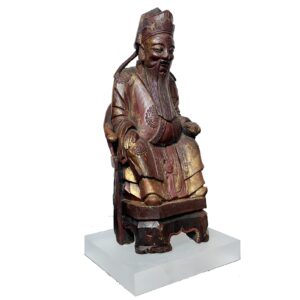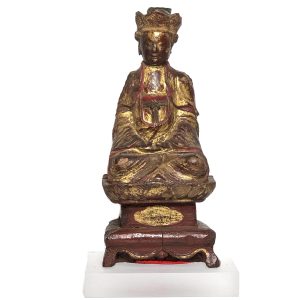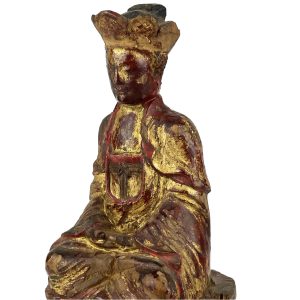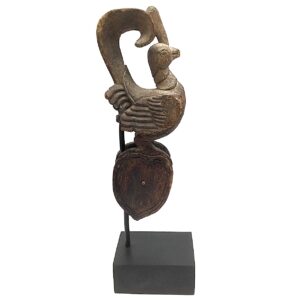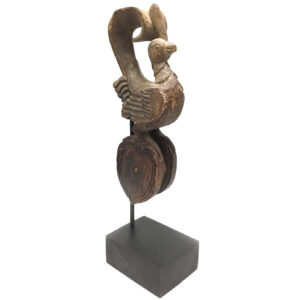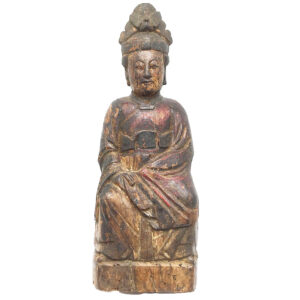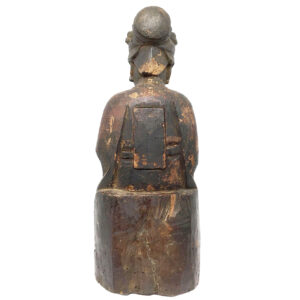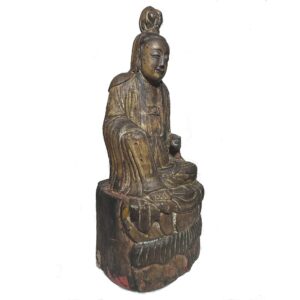Showing 1–12 of 58 results
-
Sale!


$575.00 Original price was: $575.00.$495.00Current price is: $495.00.
H: 10″ W: 4.125 | FREE SHIPPING WITHIN CONTINENTAL U.S.
Rare Thai Ratanakosian gilded bronze ceremonial fans used by monks or high-ranking individuals and displayed in temples or homes as a sacred decoration or ritual object. Shaped like a bodhi leaf with a Buddha in Earth Witnessing mudra.
-
Sale!


$325.00 Original price was: $325.00.$225.00Current price is: $225.00.
H: 6.375″ W: 10.75″ D: 7.125″ | FREE SHIPPING WITHIN CONTINENTAL U.S.
Charming carved and lacquered multi-use box, opening top and side drawer. Auspicious carved symbols – fu lion heads on front and plum blossoms and fan the front and frame. Painted calligraphic wish for sons. Likely was and still is unique wedding gift .
-
Sale!


$325.00 Original price was: $325.00.$275.00Current price is: $275.00.
Ht: 8.625” W: 7.5” D: 6.5” | CALL 213-568-3030 OR EMAIL [email protected] FOR SHIPPING COST
The hand crafted Tetsubin teapot displays simple yet elegant design: a scalloped top, gently curved handle, and short rounded spout, textured surface. The body is divided in 4 quadrants with meander border designs and the lid is has tiny diamond shaped indentations and is topped with a lotus shaped knob. A raised manufacturers seal on the back. Like all old Tetsubin cast iron kettles, it has rust on the bottom which can be removed by boiling green tea inside it, and is thus for display purposes only.
-
Sale!


$295.00 Original price was: $295.00.$245.00Current price is: $245.00.
Ht: 9.25″ W: 8″ D: 7.25″ | CALL 213-568-3030 OR EMAIL [email protected] FOR SHIPPING COST
Meiji hand crafted cast iron Tetsubin, simple yet elegant textured surface, unique shape top temple ornamental knob. Manufacturer’s seals on side. Perfect tea lovers gift, it is recommended for display only to enhance any kitchen.
-
Sale!


$115.00 Original price was: $115.00.$105.00Current price is: $105.00.
H: 4″ W: 9.5″ D: 4.5 ” | FREE SHIPPING
Multicolored ceramic opium pillow, hand-painted green and red florals, fruits and vases in relief, blue cobalt border. Top and bottom seals to approve for export as antique.
-
Sale!


$495.00 Original price was: $495.00.$325.00Current price is: $325.00.
H: 12 ” W:4.3 ” D: 2.25 ” | FREE SHIPPING WITHIN CONTINENTAL U.S.
Charming consecrated image of female Toast priest with Phoenix headdress holding a hu tablet. Women were welcomed as priests since Taoism beginnings.
-
Sale!


$235.00 Original price was: $235.00.$145.00Current price is: $145.00.
H: 7.25″ W: 5″ D: 5″ | FREE SHIPPING WITHIN CONTINENTAL U.S.
5-sided Shiwan glazed stoneware pillow with slanted top, used for smoking opium. The cool shell cradled the users’ heads and necks and hollow inside stored valuables. A candle placed inside emits a shadowy coin appealed to those in an opium state.
-
Sale!


$745.00 Original price was: $745.00.$425.00Current price is: $425.00.
H: 10.25” W: 4.75” D: 3.625” | FREE SHIPPING WITHin Continental U.S.
Taoist God of Wealth (Caishen) portrayed as benevolent authoritative figure associated with wealth: holds tael, robe with coin decorations, painted with red and gold.
-
Sale!


$535.00 Original price was: $535.00.$450.00Current price is: $450.00.
Ht: 10.5” W: 5.5” D: 4” | FREE SHIPPING in continental u.s.
Guanyin in lacquer and gilt sits on a lotus throne in meditation atop a decorative footed stand, regally depicted with elegantly draped robes and a 5-lobe crown with a cross hatch design. Consecrated for home altar use.
-
Sale!


$235.00 Original price was: $235.00.$165.00Current price is: $165.00.
H: 10.5” W: 3.25” D: 2.375” | FREE SHIPPING WITHIN CONTINENTAL U.S.
Elegant antique heddle-pulley carved from a single piece of Burmese teak topped by a hamsa, a goose-like bird and sacred Buddhist symbol of wisdom. Auspicious symbolic animal images are believed protect the weaver, assure quality weaving, and pleases the gods and spirits. Finely weathered from time and use.
-
Sale!


$395.00 Original price was: $395.00.$315.00Current price is: $315.00.
H: 12.5″ W: 4.8″ | 3.3″ FREE SHIPPING WITHIN CONTINENTAL U.S.
Home altar provincial Queen Mother carving depicted her as approachable, humble and matronly. Iconic phoenix on headdress. Cavity with original sealed covering indicates it was consecrated.
-
Sale!


$885.00 Original price was: $885.00.$695.00Current price is: $695.00.
H: 13.75″ W: 6″ D: 4.8″ | FREE SHIPPING WITHIN CONTINENTAL U.S.
White Hooded provincial Guanyin in lalitsana depicted as humble with a plain hood, gentle smile, holding a scroll symbolizing the Buddhist sutras in which she is mentioned including the Lotus Sutra Chapter 25.
End of content
End of content

